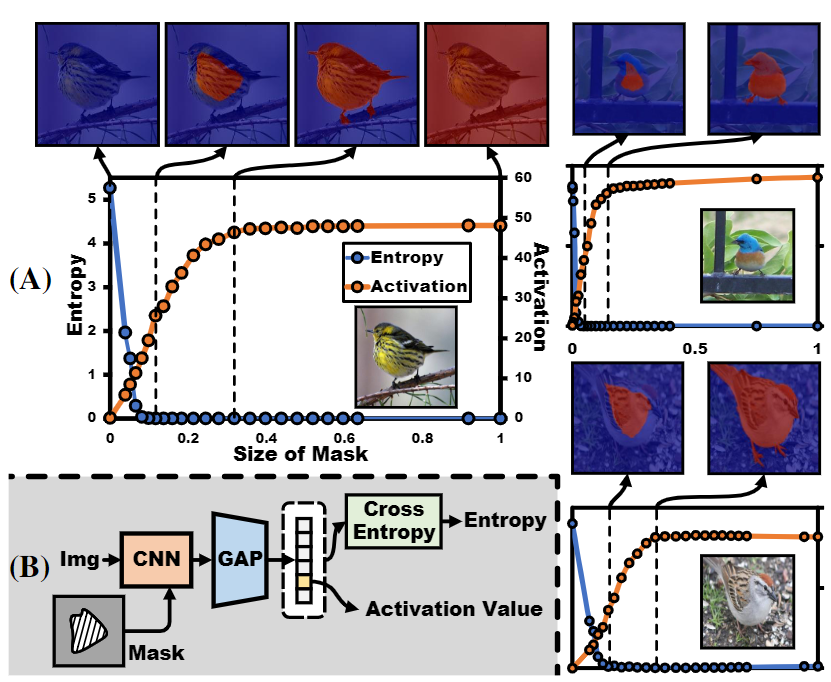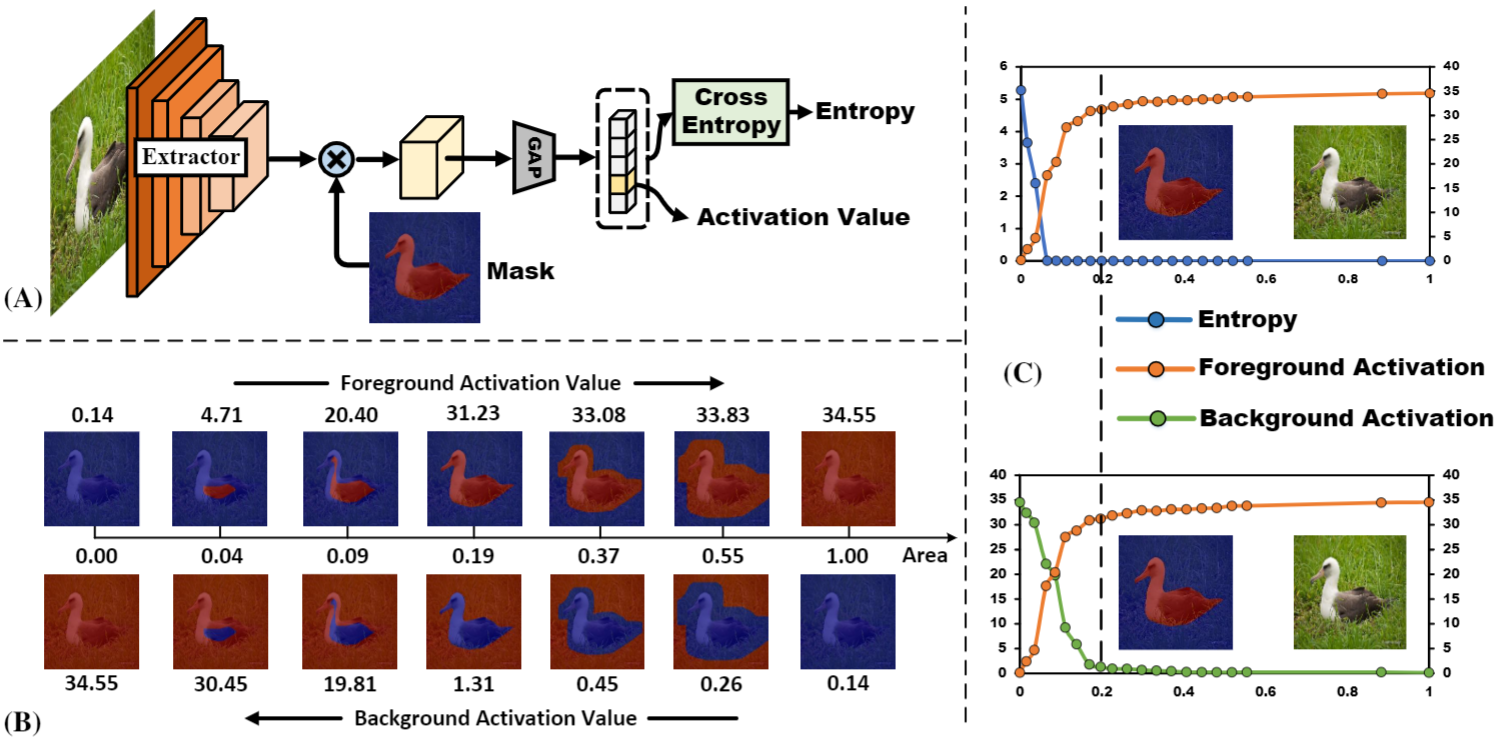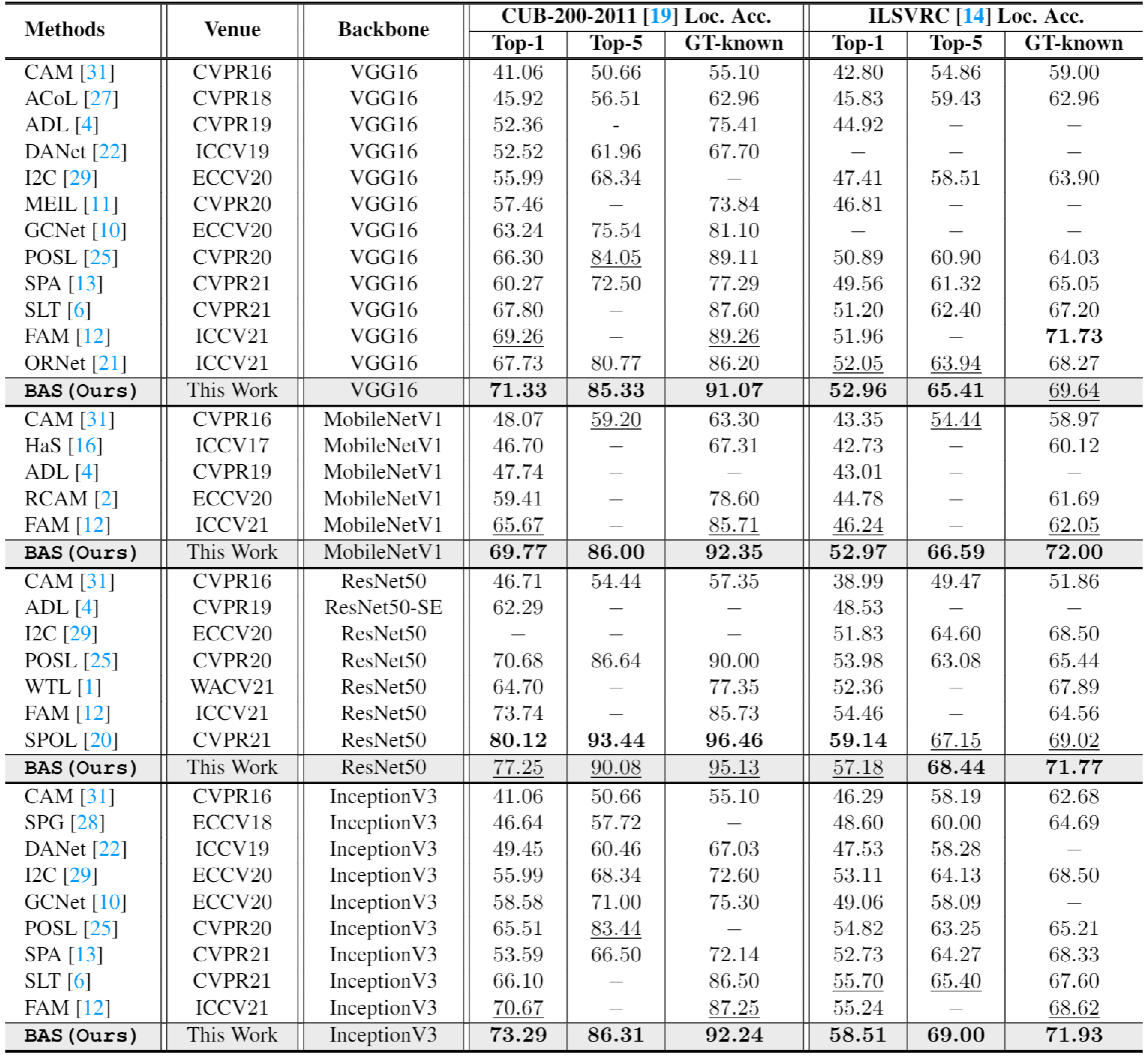PyTorch implementation of ''Background Activation Suppression for Weakly Supervised Object Localization''. This repository contains PyTorch training code, inference code and pretrained models.
- 📎 Paper Link
- 💡 Abstract
- ✨ Motivation
- 📖 Method
- 📃 Requirements
- ✏️ Usage
- 📊 Experimental Results
- ✉️ Statement
- 🔍 Citation
Background Activation Suppression for Weakly Supervised Object Localization (CVPR2022) (link)
- Authors: Pingyu Wu*, Wei Zhai*, Yang Cao
- Institution: University of Science and Technology of China (USTC)
Background Activation Suppression for Weakly Supervised Object Localization and Semantic Segmentation (IJCV) (link)
- Authors: Wei Zhai*, Pingyu Wu*, Kai Zhu, Yang Cao, Feng Wu, Zheng-Jun Zha
- Institution: University of Science and Technology of China (USTC) & Institute of Artificial Intelligence, Hefei Comprehensive National Science Center
Weakly supervised object localization (WSOL) aims to localize objects using only image-level labels. Recently a new paradigm has emerged by generating a foreground prediction map (FPM) to achieve localization task. Existing FPM-based methods use cross-entropy (CE) to evaluate the foreground prediction map and to guide the learning of generator. We argue for using activation value to achieve more efficient learning. It is based on the experimental observation that, for a trained network, CE converges to zero when the foreground mask covers only part of the object region. While activation value increases until the mask expands to the object boundary, which indicates that more object areas can be learned by using activation value. In this paper, we propose a Background Activation Suppression (BAS) method. Specifically, an Activation Map Constraint module (AMC) is designed to facilitate the learning of generator by suppressing the background activation value. Meanwhile, by using the foreground region guidance and the area constraint, BAS can learn the whole region of the object. In the inference phase, we consider the prediction maps of different categories together to obtain the final localization results. Extensive experiments show that BAS achieves significant and consistent improvement over the baseline methods on the CUB-200-2011 and ILSVRC datasets. Code and models are available at https://github.com/wpy1999/BAS.
Motivation. (A) The entroy value of CE loss
We introduce the implementation of the experiment, as shown in Fig. \ref{Exploratory Experiment} (A). For a given GT binary mask, the activation value (Activation) and cross-entropy (Entropy) corresponding to this mask are generated by masking the feature map. We erode and dilate the ground-truth mask with a convolution of kernel size
Exploratory Experiment. Examples about the entroy value of CE loss
The architecture of the proposed BAS. In the training phase, the class-specific foreground prediction map
- python 3.6.10
- torch 1.4.0
- torchvision 0.5.0
- opencv 4.5.3
git clone https://github.com/wpy1999/BAS.git
cd BAS- CUB (http://www.vision.caltech.edu/visipedia/CUB-200-2011.html)
- ILSVRC (https://www.image-net.org/challenges/LSVRC/)
python train.py --arch ${Backbone}
To test the CUB models, you can download the trained models from
[ VGG16 (Google Drive), (Baidu Drive) ],
[ Mobilenetv1 (Google Drive), (Baidu Drive) ],
[ ResNet50 (Google Drive), (Baidu Drive) ],
[ Inceptionv3 (Google Drive), (Baidu Drive) ],
then run BAS_inference.py:
cd CUB
python BAS_inference.py --arch ${Backbone}To test the ILSVRC models, you can download the trained models from
[ VGG16 (Google Drive), (Baidu Drive) ],
[ Mobilenetv1 (Google Drive), (Baidu Drive) ],
[ ResNet50 (Google Drive), (Baidu Drive) ],
[ Inceptionv3 (Google Drive), (Baidu Drive)],
then run BAS_inference.py:
cd ILSVRC
python BAS_inference.py --arch ${Backbone}This project is for research purpose only, please contact us for the licence of commercial use. For any other questions please contact wpy364755620@mail.ustc.edu.cn or wzhai056@mail.ustc.edu.cn.
@inproceedings{BAS,
title={Background Activation Suppression for Weakly Supervised Object Localization},
author={Pingyu Wu and Wei Zhai and Yang Cao},
journal={arXiv preprint arXiv:2112.00580},
year={2021}
}





